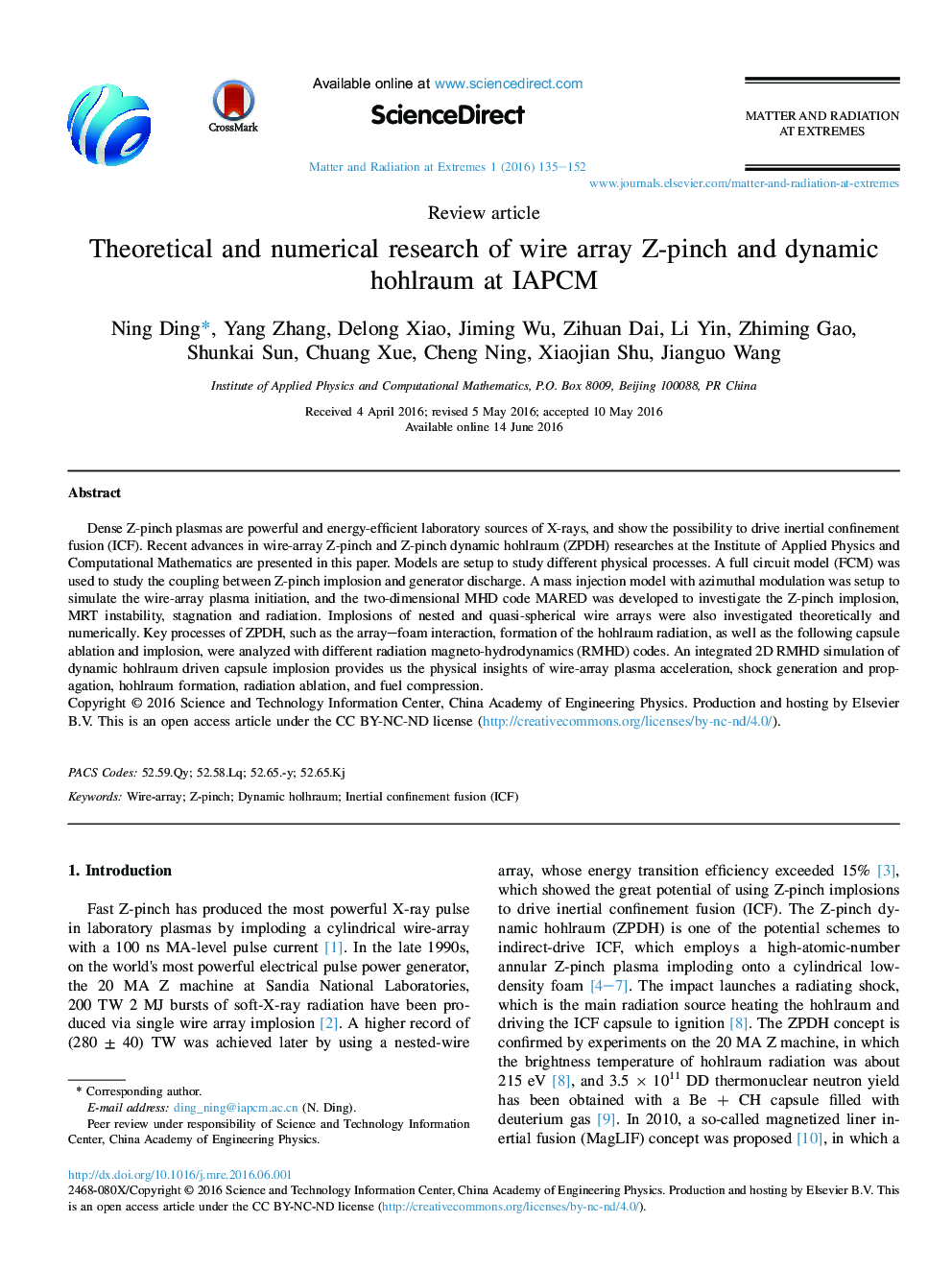| Article ID | Journal | Published Year | Pages | File Type |
|---|---|---|---|---|
| 1739802 | Matter and Radiation at Extremes | 2016 | 18 Pages |
Dense Z-pinch plasmas are powerful and energy-efficient laboratory sources of X-rays, and show the possibility to drive inertial confinement fusion (ICF). Recent advances in wire-array Z-pinch and Z-pinch dynamic hohlraum (ZPDH) researches at the Institute of Applied Physics and Computational Mathematics are presented in this paper. Models are setup to study different physical processes. A full circuit model (FCM) was used to study the coupling between Z-pinch implosion and generator discharge. A mass injection model with azimuthal modulation was setup to simulate the wire-array plasma initiation, and the two-dimensional MHD code MARED was developed to investigate the Z-pinch implosion, MRT instability, stagnation and radiation. Implosions of nested and quasi-spherical wire arrays were also investigated theoretically and numerically. Key processes of ZPDH, such as the array–foam interaction, formation of the hohlraum radiation, as well as the following capsule ablation and implosion, were analyzed with different radiation magneto-hydrodynamics (RMHD) codes. An integrated 2D RMHD simulation of dynamic hohlraum driven capsule implosion provides us the physical insights of wire-array plasma acceleration, shock generation and propagation, hohlraum formation, radiation ablation, and fuel compression.
